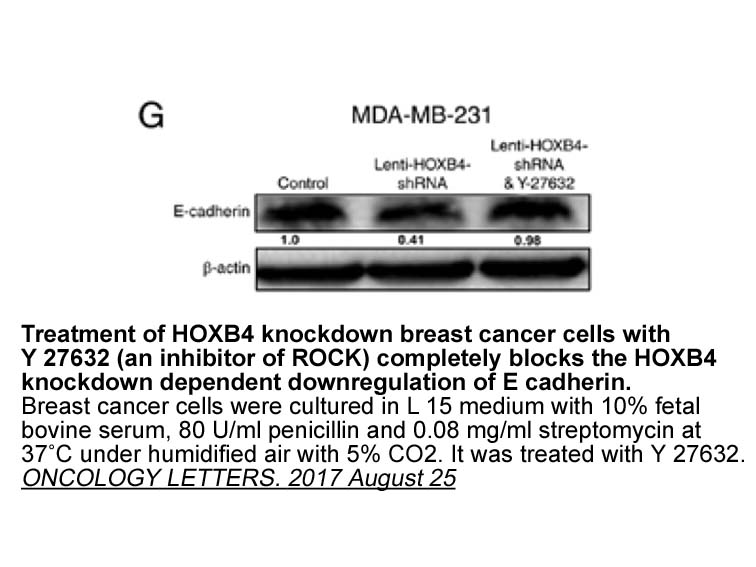Archives
While earlier reports on ferroptosis
While earlier reports on ferroptosis did not clarify mitochondrial damage and consequent death signaling in this paradigm of oxidative death, evidence from recent studies in neuronal systems strongly suggested a mechanistic link between enhanced lipid peroxide formation and loss of mitochondrial integrity and function. For example, cell death induced by GPX4 deletion and the associated detrimental lipid peroxidation involved mitochondrial release of apoptosis-inducing factor (AIF) to the nucleus [16]. Furthermore, our previous studies in model systems of glutamate-induced oxytosis suggested a key role for mitochondrial transactivation of the pro-apoptotic BCL2-family protein BH3 interacting-domain death agonist (BID) to mitochondria, which, in turn, mediated severe alterations in mitochondrial integrity and function, e.g. mitochondrial fission, mitochondrial ROS formation and loss of mitochondrial membrane potential [22], [23], [24], [25]. This mitochondrial damage resulted in the mitochondrial release and translocation of AIF to the nucleus thereby mediating caspase-independent cell death [16], [17], [23], [24], [26].
Results
Discussion
In the present study, we elucidated the time-dependent progression of oxidative cell death upon GPX4 inhibition by RSL3 and revealed direct and indirect mitochondrial protection as an efficient strategy for interfering with ferroptosis. We used RSL3 to induce ferroptosis in neuronal HT22 Trelagliptin and mouse embryonic fibroblasts where it induced consecutive loss of GPX4 activity, fo llowed by lipid peroxidation, loss of mitochondrial membrane potential, enhanced mitochondrial fragmentation and reduced mitochondrial respiration (Fig. 7). Commonly used ferroptosis inhibitors (deferoxamine, ferrostatin-1 and liproxstatin-1), CRISPR/Cas9 Bid KO and the BID inhibitor BI-6c9 protected against RSL3 induced oxidative cell death. Most strikingly, we found that the mitochondria-targeted ROS scavenger MitoQ preserved mitochondrial integrity and function as well as cell viability despite RSL3 induced loss of GPX4 activity.
We identified the specific toxicity of RSL3 attributed to its unique spatial conformation, which is in general agreement with earlier reports by Yang and co-workers [19]. Further, we applied a novel RSL3 variant, lacking the chlorine-substituent, which was incapable of inducing oxidative stress and, thus, did not exert cytotoxic effects. This finding supports the conclusion that the electrophilic chloroacetamide moiety serves as an indispensable chemical feature for the covalent binding to the active site of GPX4 [27]. In accordance with previous studies [4], our data suggest that RSL3 toxicity was not only a result of covalent GPX4 binding and inactivation but, was also attributed to a remarkable reduction of protein levels of GPX4 within 10 h of RSL3 exposure. This observation strongly implies a significant protein degradation after GPX4 inactivation by RSL3.
The chronological analysis of oxidative cell damage allowed for temporal resolution of the underlying oxidative death cascades. In the applied model of ferroptosis, lipid peroxidation owing to GPX4 inhibition was detected rapidly after RSL3 exposure followed by significant mitochondrial damage which occurred with a delay of approximately two to four hours. The time course of oxidative cell damage by RSL3, identified here in HT22 neuronal cells and fibroblasts, confirmed findings from prior work in a variety of different cell types which documented specific hallmarks of erastin, RSL3 or GPX4 KO induced ferroptosis, such as toxic iron overload, disturbed GSH redox homeostasis and lipid peroxidation through 12/15-lipoxygenases or autoxidation [2], [3], [4]. However, previous studies largely focused on the early hallmarks of ferroptosis, such as pronounced lipid ROS formation as upstream mechanisms, but did not elucidate further cellular consequences downstream of the disrupted redox homeostasis, such as mitochondrial damage or the organelles’ contribution in this paradigm of regulated oxidative death.
llowed by lipid peroxidation, loss of mitochondrial membrane potential, enhanced mitochondrial fragmentation and reduced mitochondrial respiration (Fig. 7). Commonly used ferroptosis inhibitors (deferoxamine, ferrostatin-1 and liproxstatin-1), CRISPR/Cas9 Bid KO and the BID inhibitor BI-6c9 protected against RSL3 induced oxidative cell death. Most strikingly, we found that the mitochondria-targeted ROS scavenger MitoQ preserved mitochondrial integrity and function as well as cell viability despite RSL3 induced loss of GPX4 activity.
We identified the specific toxicity of RSL3 attributed to its unique spatial conformation, which is in general agreement with earlier reports by Yang and co-workers [19]. Further, we applied a novel RSL3 variant, lacking the chlorine-substituent, which was incapable of inducing oxidative stress and, thus, did not exert cytotoxic effects. This finding supports the conclusion that the electrophilic chloroacetamide moiety serves as an indispensable chemical feature for the covalent binding to the active site of GPX4 [27]. In accordance with previous studies [4], our data suggest that RSL3 toxicity was not only a result of covalent GPX4 binding and inactivation but, was also attributed to a remarkable reduction of protein levels of GPX4 within 10 h of RSL3 exposure. This observation strongly implies a significant protein degradation after GPX4 inactivation by RSL3.
The chronological analysis of oxidative cell damage allowed for temporal resolution of the underlying oxidative death cascades. In the applied model of ferroptosis, lipid peroxidation owing to GPX4 inhibition was detected rapidly after RSL3 exposure followed by significant mitochondrial damage which occurred with a delay of approximately two to four hours. The time course of oxidative cell damage by RSL3, identified here in HT22 neuronal cells and fibroblasts, confirmed findings from prior work in a variety of different cell types which documented specific hallmarks of erastin, RSL3 or GPX4 KO induced ferroptosis, such as toxic iron overload, disturbed GSH redox homeostasis and lipid peroxidation through 12/15-lipoxygenases or autoxidation [2], [3], [4]. However, previous studies largely focused on the early hallmarks of ferroptosis, such as pronounced lipid ROS formation as upstream mechanisms, but did not elucidate further cellular consequences downstream of the disrupted redox homeostasis, such as mitochondrial damage or the organelles’ contribution in this paradigm of regulated oxidative death.